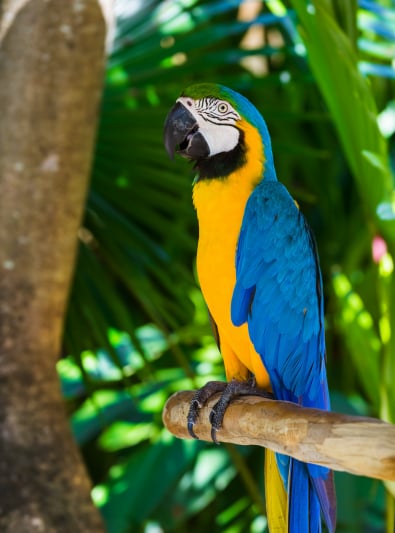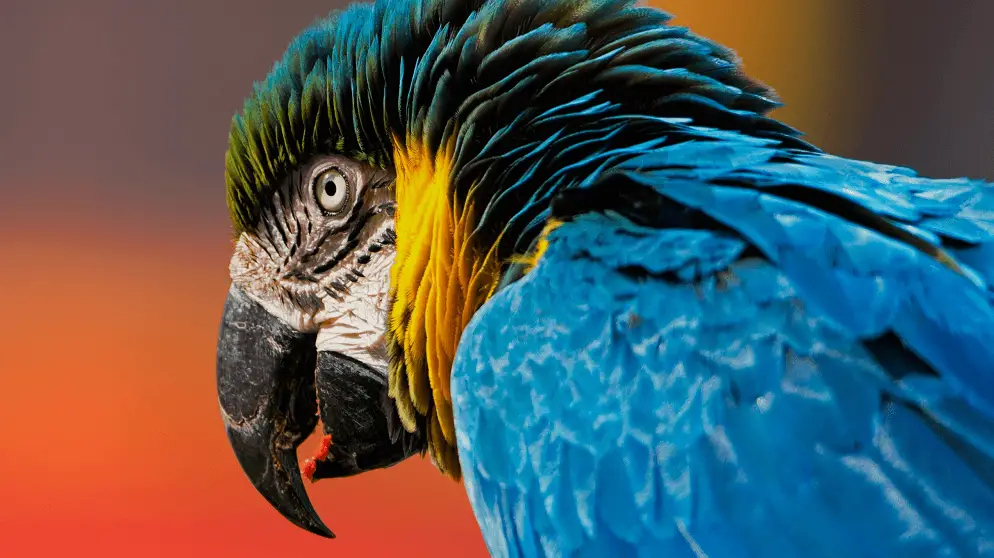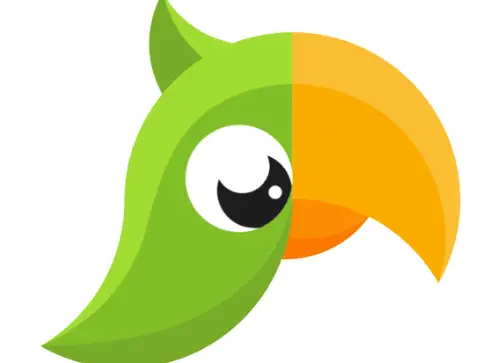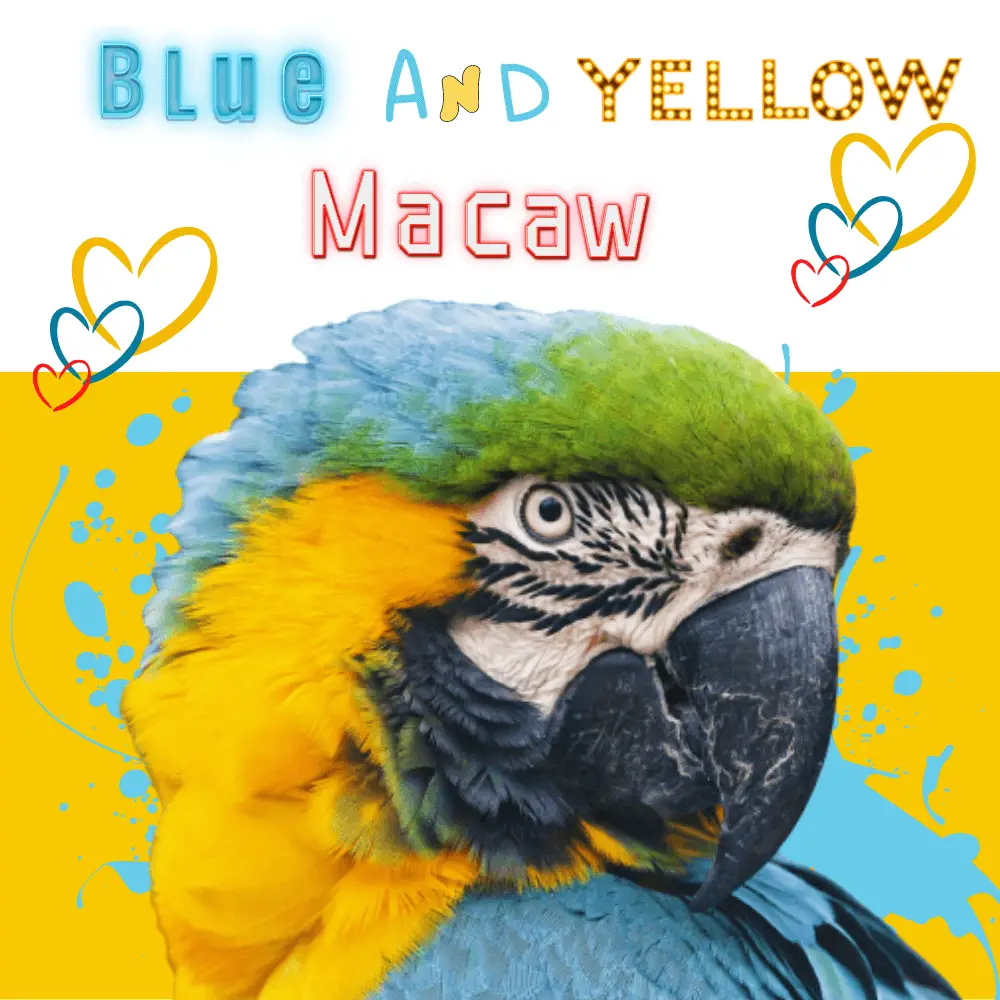the Blue and Yellow Macaw is a protected species. The bird itself and its habitat are threatened.
This large parrot displays a playful and expressive temperament. We also appreciate his ability to “speak”, or rather to imitate our language.
Scientific name: Ara ararauna

| Family | Psittacidae |
|---|---|
| Gender | Macaw |
| Weight | 1300 gr |
| blue and yellow macaw size | 90 cm |
| blue and yellow macaw lifespan | From 35 to 63 years old, the Blue and Yellow Macaw has a life expectancy of 35 to 40 years in its natural environment. This hope can be up to 60 years in captivity. |
|---|
Blue and yellow macaw habitat
this Macaw lives mainly in South America and more specifically in the Amazon.
Its natural habitat is therefore distributed between Guyana, Brazil, Venezuela, Argentina, Peru, Colombia, Bolivia, and Ecuador.
it is primarily searching for humid forest regions, where tarpaulin palm (Mauritia flexuosa) grows, and near rivers.
History of the breed
It was first described in 1758 by Swedish naturalist Carl von Linnaeus.
Threatened by the destruction of its natural habitat due to deforestation, is the subject of protection measures in some countries.
It has thus been one of the bird species protected in Guyana since 1986 and is one of the animals protected by the Washington Convention (Appendix II).
Talking Blue and Gold Macaw
SOURCE: Parrot Paradise
Physical features
The name that the Blue and yellow macaw bears obviously refers to the 2 dominant colors of its beautiful plumage.
The abdomen, the outline of the lower jaw, and the inner side of the tail are golden yellow, while the upper side is turquoise blue.
The head is blue-green. The face is white and streaked with black under the eye. The beak and legs are black, and the eyes yellow.
The male is generally larger than the female. The color of its plumage is also darker. its have a wingspan that varies between 105 and 115 cm.
Blue and yellow macaw behavior
In captivity, the character of the blue and yellow Macaw is often described as playful and engaging.
It is also reputed to be very noisy and expressive. He emits different kinds of cries and amuses with his ability to imitate human language.
In the wild, it evolves in pairs within more or less large groups. It is, moreover, a monogamous animal; he will keep a single partner throughout his life.
Blue and yellow macaw diet
it feeds mainly on grains, nuts, fruits (apple, pear, banana, strawberry …), and vegetables (carrot, green beans …).
Blue and gold macaw reproduction
The blue and yellow Macaw establishes its nest in the holes of palm trees, preferably dry. The female generates 2 to 4 eggs per lay, then broods for 28 days.
It is around the age of 3 months that the young parrots leave the nest. However, they continue to be fed by their parents until 6, 7, or even 8 months. The age of sexual maturity in this Macaw is between 8 and 10 years.
Health
it is a bird with rather robust health, but it can suffer from various diseases if it does not benefit from adequate monitoring and care: follicular cyst, conjunctivitis, chlamydia, capillary worms…
Way of life

Because of its large size, the large blue and yellow parrot needs a large cage, even an aviary outdoors.
It is however advisable to choose the location of the latter so that birds are well protected from weather conditions.
The living space of this parrot must be adorned with solid perches, trunks, and games offering the opportunity to peel, shelters, drinkers, and feeders well accessible.
SOURCE: VT Vlogs

